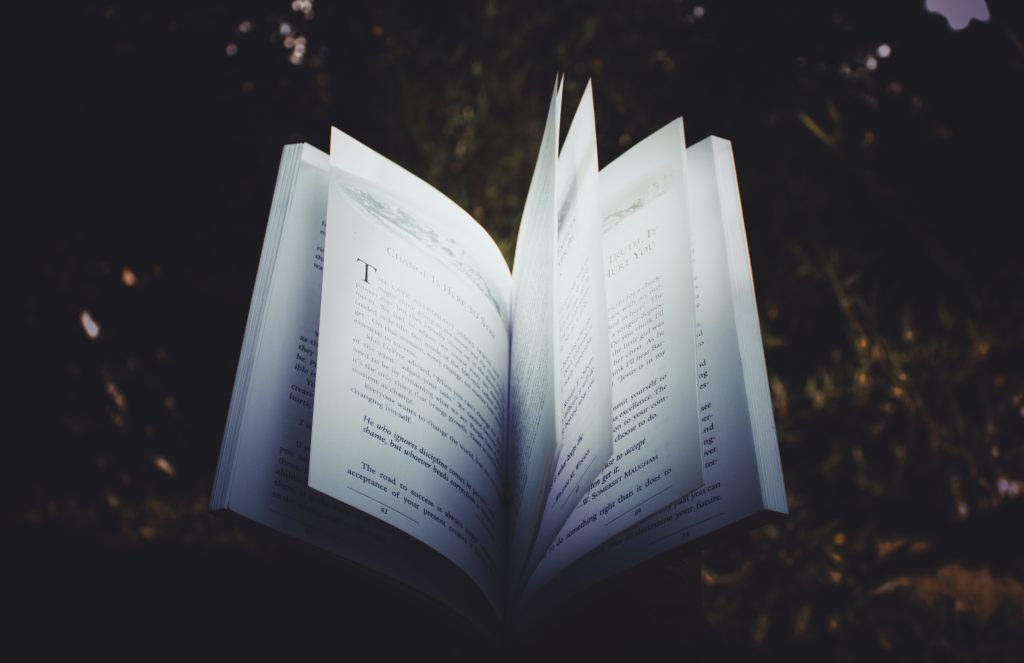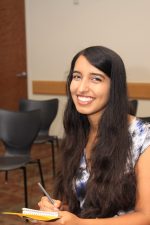
By Sana Hameed – Follow @sana21hameed

At eight years old, my voice was my pen and my audience, my paper. Channeling my love for storytelling, I would self-publish novels using a stack of cardstock, Crayola markers, and a stapler, my heart chock full of ambition. While my plots were for the most part vague and simplistic, I described my characters in great detail. Crystal had light skin and aquamarine eyes that danced when she talked. Angela fostered an intense devotion to her loved ones and treasured family dinners of meatloaf and mashed potatoes. Lucy was a passionate believer, going to church every single Sunday to listen to the pastor’s sermons. I relished bestowing pretty names upon the pretty faces I described.
One night, I read one of my stories to my Dadi under the soft glow of her bedside lamp. Nestled in the covers, she sat propped against pillows, listening intently. When I finished, she gently took the book from my hands. Her fingers skimmed the illustrations, her lips mouthed the words before she handed the pages back to me.
“Gudiya,” she spoke just barely above a whisper, “tu hamare baare men kab likhegi?”
Translation: When will you write about us?
Back then, it seemed natural to me, a tan-skinned Muslim girl who grew up in a joint family, to write about characters with whom I could not personally relate. At first, I thought it was a testament to my imagination that I could come up with realistic names, places, and personas based on experiences I personally did not have. However, I came to realize that there was nothing imaginative about it. I was merely recreating the stories I had seen and heard time and time again.
When watching Chimamanda Ngozi Adichie’s TED talk “The Danger of a Single Story,” I could see my Dadi’s face in her words. Adichie discusses how “impressionable and vulnerable” we all are in the face of stories, especially as a child. Children who are only exposed to a “single story” are prone to regurgitating that story because that is all they have ever known. It’s clear to me now that I was no different.
I demonstrated considerable cultural neglect by writing solely about white nuclear families, living the lives I saw on television or read about in YA books. My stories mirrored a reality for someone but they were not my reality. As much as I tried to deny it in my youth, my reality differed remarkably from that of my characters. Dadi’s question spurred other questions: How could I write effectively about someone else’s reality? Why was I rewriting the same story when I could tell my own?
My reality was the coconut oil my mom poured into my thick, dark hair before cinching the strands into a nice, tight braid. My reality was the dinners where we sat wherever we could find a seat, where I scarfed down salan and handmade roti while I listened to my boisterous family members bumble and bicker. My reality was the tasbih bracelet wrapped around my wrist which I would use when saying salwat as I sat criss-cross on the carpet of my bedroom.
I wrote about the lives of the people I saw because I was dazed by the beauty in them. However, in doing so, I overlooked the beauty of my own culture. My reality was indeed different, but Dadi’s question reminded me to find pride in the difference.
My name is Sana, which in Arabic means radiance. Though it sounded strange and foreign on my lips for many years, now I am proud to claim it as my name. I am proud of who I am and where I come from and I want my words to reflect that sentiment.
“Tu hamare baare men kab likhegi?” Dadi once asked me.
I replied adamantly, my voice tinged with determination and passion.
“Abhi, Dadi. Abhi.”
*Abhi- now
*Gudiya- endearment meaning ‘doll’
*salan– curry
*roti- bread
*tasbih-prayer beads
*salwat-a type of prayer
 Sana Hameed is a freshman Business major at the University of Texas at Austin, hoping to minor in journalism. She is passionate about family dynamics, gender equality, and representation. In her free time, Sana adores reading, working on her novel, doing tae kwon do, and indulging in her love for dark chocolate. As Associate Editor for the Humanities section of Brown Girl, Sana hopes to help amplify the voices of girls everywhere by promoting pluralism and highlighting significant world issues.
Sana Hameed is a freshman Business major at the University of Texas at Austin, hoping to minor in journalism. She is passionate about family dynamics, gender equality, and representation. In her free time, Sana adores reading, working on her novel, doing tae kwon do, and indulging in her love for dark chocolate. As Associate Editor for the Humanities section of Brown Girl, Sana hopes to help amplify the voices of girls everywhere by promoting pluralism and highlighting significant world issues.




